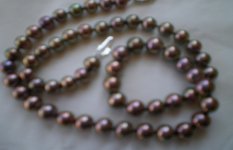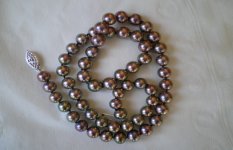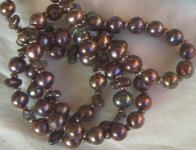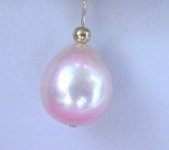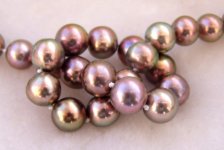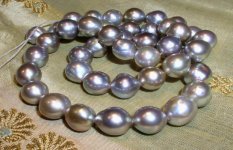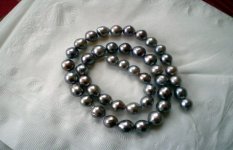Caitlin Williams said:
Oh, I forgot to say, the paraparadshas are a color- a peachy pink orange- extremely rare in the gemstone for which it was named. Maybe Ana knows......
Right. It is a coveted type of sapphire - the name does not apply to any other gemstone that may have a similar color, it is a matter of tradition. Where the 'pad' color ends and either orange or yellow begins is a matter of debate and commercial negotiation.
That's the shortest summary Icould come up with. Richard Hughes has a short, neat bit about the matter
HERE. BTW. his 'Ruby & Sapphire' book is a cracking read, even if one only cared about pearls, or topaz, or anything but corundrum. No kidding! I've read it in one night and never looked back...
And here's one instance of the padparatcha color range - a crazi lil' bit from
Richard Wise's Blog (another good read, btw - check the two articles called
'The Rocky Road AHead...' ).
.....
Does it make sense that these guys are so famous? 
The magic color might appear in other stones, but not quite as pure or intense. Even when that happens, the P word is only reserved to sapphire. To translate that to pearls... not sure what would it mean. Among freshwater pearls the shades in the pad range seem very common - actually, most of the 'pink' are peachy enough to qualify. So you'd have tons of 'padparatcha' pearls. And the sense of rarity and mystical appeal (the sapphire label comes from Hinduist and Budhist background where the association with the lotus is a weightly thing) of the descritption is lost.
I'm not a fan of calling anything else 'pad'. maybe, one day things wuld be settled enough in freshwater pearl culture to allow a certain color to be recognized as naturally and reliably rare. Then... who knows, that should have a special name; hopefully not something borrowed on the cheap from sapphire. Could be wrong, but so far it seems to me that the coveted pearl rarities of today still have good chances to become mass production tomorrow. O wouldn't know what to associate with an entrenched sapphire label that has milenia of track record to prove its worth.
[obviously, just an opinion... worth talking about if someone could come up with a good sample of possible pearl pinks!?]
Sorry for the rant...
Want to know what exactly padparatcha colors look like? A florist nearby should have a sample. Jewelers might as well, although you would need a good shop and allot of luck to find more than one stone to look at anywhere. Besides, 'padparatcha' is not a single shade, but a relatively wide range of looks that needs to be learned. The sapphire prices offer pretty good incentive to put in the effort though, whether you're on the buying or selling side. The subtle beauty gives good incentives to learn about these things even you're on neither.
Nelumbo Nucifera, the wild Indian lotus grows happily around here and in the US, although a miriad of garden hibrids are more commonly cultivated. The link above even provides a detailed range.
The color is what it is and that some gem is plentiful in this range is
lucky. A strand illustrating the range of pink and peach freshwater colors at their best would be quite a sight, methinks... Add a golden one for a hidden clasp, and all colors of a flowering lotus would be right there. No need for borrowed names whatsoever. [IMO]
